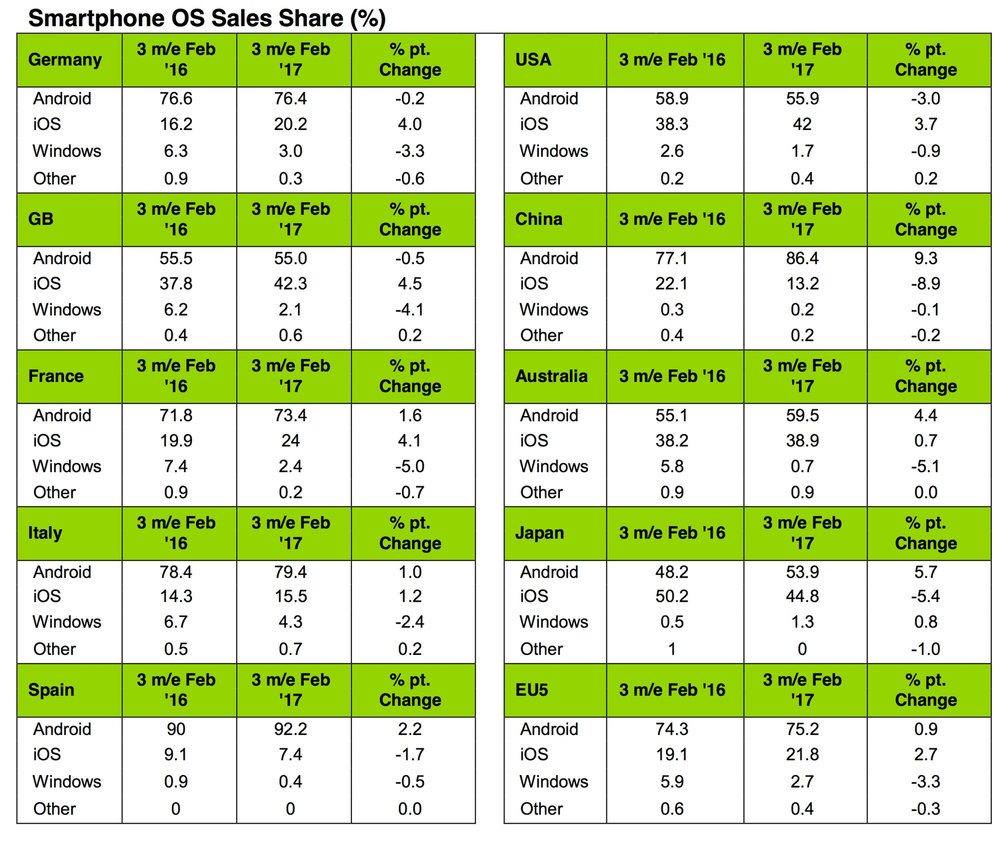In the three-month period ending February 2017, iOS accounted for 13.2% of smartphone sales in urban China, a decline of 8.9 percentage points from 22.1% a year earlier. This marks iOS’ lowest share since the three-month period ending July 2014, reports Kantar Worldpanel.
That said, the iPhone 7 and iPhone 7 Plus remained the top selling devices in the region, accounting for 8% of smartphone sales, says Lauren Guenveur, consumer insight director for the research group. By comparison, iPhone 6s and 6s Plus accounted for 14% of smartphone sales in the three months ending February 2016.
Android OS share in urban China in the three months ending February 2017 was greater than at any time in the previous year, accounting for 86.4% of smartphone sales compared to 77.1% in the same period one year earlier, notes Kantar. Android share also rose slightly in EU5 (Great Britain, Germany, France, Italy, and Spain) from 74.3% to 75.2% of smartphone sales in that region, but declined three percentage points in the US, from 58.9 to 55.9%.

In the U.S., Android dropped to 55.9% of smartphone sales in the three months ending February 2017, marking another period of year-on-year decline that began in the second quarter of 2016. iOS accounted for 42% of smartphones sold in the U.S., up 3.7 percentage points from 38.3% the previous year. iPhone 7 and iPhone 7 Plus remained the top-selling smartphones in the US where they have been in the lead since the three months ending November 2016.
Although Google Pixel was not expected to be a game changer in its first iteration, there were hopes that it might soften the drop in Android sales that typically occurs around an iPhone launch. Among US consumers intending to purchase over the next six months, 23% indicate that they will consider a Google Pixel; however, since its release, Pixel hasn’t been able to surpass 2% of smartphone sales, in part because supply constraints have limited its availability, according to Kantar.
But back to China. In a report by App Annie, a analytics services and market intelligence company, China is believed to have exceeded the U.S. to become the largest market for the Apple App Store, pulling down between $5 billion and $6 billion in revenue. Even if Apple doesn’t grow its share, and just “maintains,” the tech giant should garner $16 billion in purchases by 2020.
